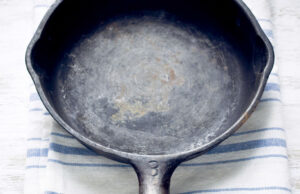Microwaves are amazing at reheating food, but we all know the nightmare of accidentally burning something inside. The smell lingers, and no matter how much you clean, it feels like it will never go away. If you’ve ever wondered how to get that burnt smell out of your microwave, you’re not alone! Whether it’s leftover popcorn or a forgotten cup of soup, that burnt stench can be stubborn. But don’t worry! In this article, I’ll walk you through some simple and effective methods to banish that burnt odor and get your microwave smelling fresh again.

Method 1: Using Baking Soda for a Deep Clean
Baking soda is one of the best natural deodorizers around, and it can work wonders for removing that burnt smell from your microwave. Not only does it neutralize odors, but it also helps to clean any grime and residue that may be lingering. Here’s how to use it:
Step 1: Prepare the Baking Soda Solution
Start by filling a microwave-safe bowl with about 2 cups of warm water. Then, add a tablespoon of baking soda into the water and stir it well. The warm water helps dissolve the baking soda, making it more effective.
Step 2: Heat the Solution
Place the bowl of baking soda solution in the microwave and heat it on high for about 3 to 5 minutes. As the solution heats up, it will create steam that penetrates the walls and the inside of the microwave, loosening up any burnt particles. It will also help to neutralize the odors.
Step 3: Let it Sit and Wipe Down
After the timer goes off, let the bowl sit in the microwave for another 5 minutes. This will give the steam time to really work its magic. Once the time has passed, carefully remove the bowl (it might be hot), and wipe down the inside of the microwave with a clean cloth or sponge. You should notice a huge difference in the smell.
Step 4: Repeat if Necessary
If there’s still a hint of the burnt smell, don’t worry! You can repeat this process one or two more times. The combination of heat, steam, and baking soda is a powerful solution for freshening up your microwave.
Method 2: Lemon Power for a Fresh Scent
Lemon is not only a natural disinfectant but also a great way to get rid of stubborn odors. The citrusy scent will leave your microwave smelling fresh and clean. Plus, it’s super easy to do! Here’s how to use lemons for deodorizing your microwave:
Step 1: Slice the Lemon
Start by cutting a lemon in half. You can either use one or two lemons, depending on how strong the odor is.
Step 2: Microwave the Lemon
Place the lemon halves in a microwave-safe bowl with about 1 to 2 cups of water. Heat the mixture on high for about 3 minutes. The steam will release from the lemon, and its natural oils will help to eliminate the burnt smell in the microwave.
Step 3: Let the Steam Work
Once the microwave has finished, leave the bowl inside for a few more minutes to allow the steam to penetrate all areas. The citrus will break down the odors and leave your microwave smelling fresh.
Step 4: Wipe Down the Microwave
After the lemon steam has done its job, carefully remove the bowl and wipe down the microwave’s interior with a clean cloth. You’ll notice the burnt smell is gone, and a lovely citrus scent will take its place.
Step 5: Repeat if Needed
If the burnt smell is still lingering, you can repeat this method as necessary. Lemons are gentle but effective in cutting through unpleasant odors.
Method 3: Vinegar Solution for Stubborn Odors
Vinegar is another great option for getting rid of strong burnt smells. It’s a powerful cleaning agent that can easily neutralize odors while disinfecting surfaces. Here’s how you can use vinegar to freshen up your microwave:
Step 1: Prepare the Vinegar Solution
Mix equal parts of water and white vinegar in a microwave-safe bowl. About 1 cup of each should do the trick. You can add a few drops of essential oil if you prefer a nicer scent, but vinegar alone is quite effective.
Step 2: Heat the Solution
Place the bowl in the microwave and heat it on high for about 3 minutes. The vinegar steam will spread throughout the microwave, helping to eliminate the burnt odor.
Step 3: Let it Sit
After the microwave stops, let the solution sit inside for a few minutes. This will give the steam time to work and ensure that the burnt smell is neutralized.
Step 4: Clean and Wipe Down
Once the time is up, carefully remove the bowl and wipe down the inside of the microwave. The vinegar will have neutralized the burnt odor, leaving your microwave smelling fresh.
Step 5: Repeat if Necessary
If the burnt smell is still there, feel free to repeat the process. Vinegar is a great odor eliminator, and it’s not harsh, so it’s safe to use multiple times.
Method 4: Activated Charcoal for Odor Absorption
If you’re dealing with a particularly stubborn burnt smell, activated charcoal can be an excellent solution. It’s known for its ability to absorb odors, and it can work wonders for neutralizing even the most persistent smells. Here’s how to use activated charcoal in your microwave:
Step 1: Place the Activated Charcoal
You can find activated charcoal in stores or online, and it’s usually sold in small pouches or loose form. To use it, place a small bag of activated charcoal inside the microwave when it’s not in use. Leave it there for a few days to help absorb any lingering odors.
Step 2: Let it Do Its Magic
Activated charcoal works best over time, so it may take a few days for the burnt smell to disappear completely. Simply leave the charcoal inside your microwave, and it will gradually absorb the odor.
Step 3: Clean the Microwave
Once the burnt smell is gone, wipe down the inside of your microwave with a damp cloth. You can then remove the activated charcoal and store it for future use if needed.
Step 4: Repeat if Needed
If the smell persists after a few days, consider getting fresh activated charcoal and repeating the process. It’s a natural, chemical-free method that works great on tough odors.
I hope these simple methods will help you finally get rid of that burnt smell in your microwave! Whether you choose baking soda, lemons, vinegar, or activated charcoal, each method can work wonders in freshening up your microwave and making it smell like new again. You no longer have to worry about your microwave smelling like last week’s burnt popcorn. With these easy steps, you can keep your kitchen smelling fresh and inviting!
Frequently Asked Questions
Is it safe to use baking soda in the microwave?
Yes, baking soda is completely safe to use in the microwave. It’s a natural and non-toxic option for deodorizing, and it works effectively to remove stubborn smells.
Can I use essential oils to freshen up my microwave?
Yes! You can add a few drops of essential oils, such as lemon or lavender, to your cleaning solution to leave a pleasant fragrance behind after cleaning your microwave.
Do I need to scrub the inside of the microwave after using lemon or vinegar?
It’s not always necessary to scrub the inside after using lemon or vinegar. The steam from both helps loosen grime and neutralize odors. However, if there are stubborn stains, a light scrub with a sponge or cloth should do the trick.
Is activated charcoal reusable?
Yes, activated charcoal can be reused multiple times. Just place it in a dry area to refresh it, and it will continue absorbing odors effectively.
Can I use a microwave-safe dish with a lid for cleaning?
Yes, you can. A microwave-safe dish with a lid can help contain the steam and prevent any mess while cleaning your microwave with baking soda or vinegar.
Is it okay to use vinegar in a microwave with food stains?
Absolutely! Vinegar is a natural disinfectant and is safe to use in the microwave, even around food stains. It will help clean, deodorize, and sanitize without leaving harmful residues.
Do I need to clean the microwave often to prevent burnt smells?
It’s a good idea to clean your microwave regularly to avoid the buildup of food debris and odors. Wiping it down after each use can help keep smells at bay.
Is it okay to use commercial cleaners in the microwave?
While some commercial cleaners are effective, it’s best to avoid harsh chemicals in the microwave, especially when you’re using it for food. Natural cleaners like vinegar, baking soda, and lemon are safer and just as effective.



